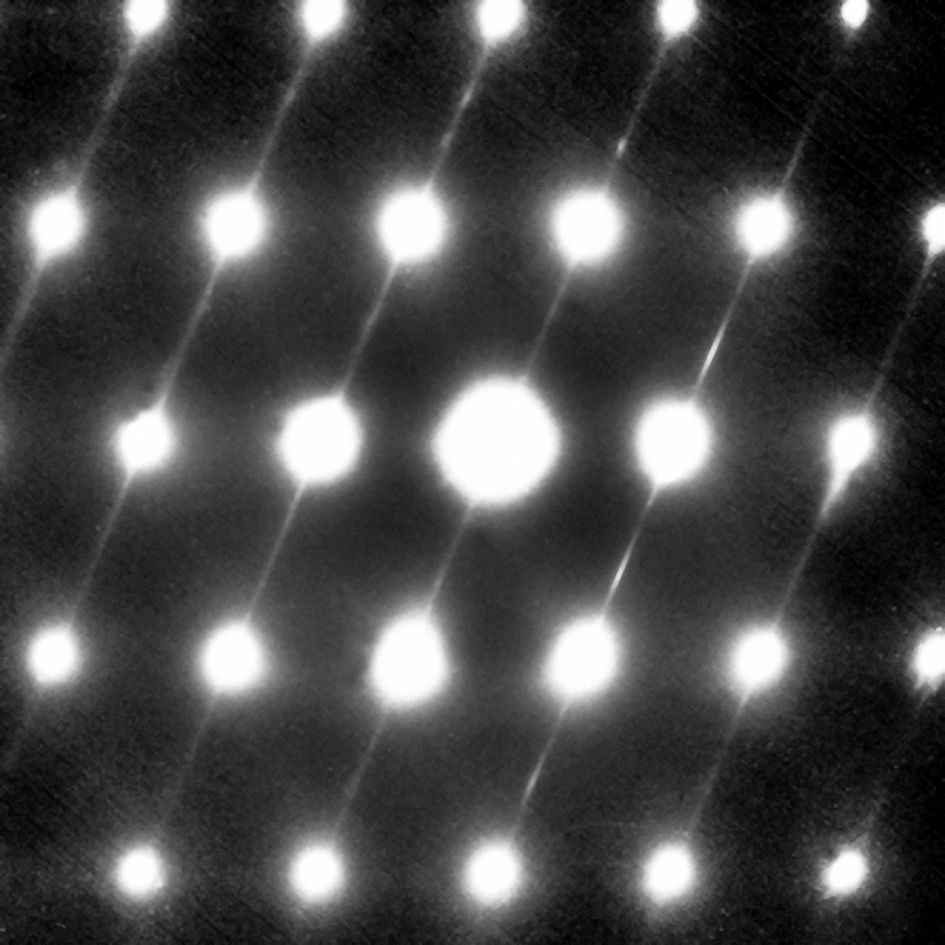The ideal materials (called dielectrics) should have high energy-storage capacity, low energy leakage and good temperature stability. Unfortunately, it is extremely difficult to obtain all three properties simultaneously. However, Prof. Ray Withers and Future Fellow Prof. Yun Liu’s group at the Australian National University (ANU) has recently designed such a material; titanium dioxide incorporating low levels of aluminium and niobium.
Their successful material design has strongly relied on an understanding of the distribution of the aluminium and niobium ions within the material and the effect this has on surrounding atoms. The researchers have used transmission electron microscopy (TEM) and electron diffraction in the AMMRF (now Microscopy Australia) at ANU to investigate the detailed arrangement of atoms. The results provide an understanding of how the extra ions affect the structure and behaviour of the new dielectric materials.

Electron diffraction pattern of the new material.
Electron diffraction shows that the aluminium atoms are distributed at specific positions between the regular arrangement of titanium and oxygen atoms in the crystal. This disrupts the long-range order of the crystal, significantly affecting the dielectric properties.
This work provides a new way to develop high-performance dielectric materials for the capacitors of the future. Capacitors are the fundamental building blocks required for virtually all the electronic and electrical devices we currently rely on. In a very real sense, a new generation of capacitors using these new dielectric materials will affect all current ‘high-tech’ areas, including energy storage.
W. Hu et al, Chem. Mater. 27, 4934 (2015).
Electron diffraction pattern of the new material.
September 21, 2015